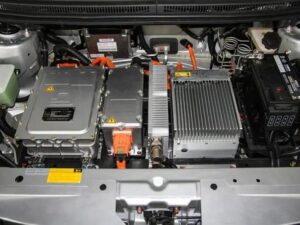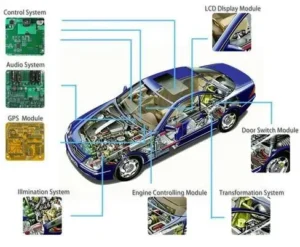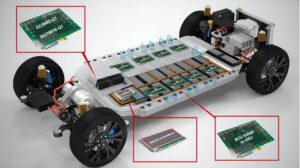Automotive PCBA is different from conventional PCBA in that it does not require high product quality and must comply with the IATF16949 automotive quality management system standards. Today, let’s learn about the things to pay attention to during the production and processing of automotive PCBA circuit boards.
Material selection: Choose materials that are resistant to high temperatures, vibrations, and corrosion to adapt to the harsh working conditions of automobiles. Organic glass fiber (FR-4) is a common choice.
Layers and Design: Determine the required PCB board layers and wiring based on the complexity of the automotive electronic system. Ensure that the size of the PCB board is suitable for the installation position.
Thermal management: Consider heat dissipation requirements and ensure that the heat dissipation components and design on the PCB board can effectively reduce temperature to prevent overheating of the components.
EMC (Electromagnetic Compatibility): Design PCB boards to minimize electromagnetic interference and ensure that they do not interfere with other electronic devices in the car. Use shielding and filters to reduce electromagnetic interference.
Maintainability: Consider the need for repair and maintenance, ensuring that components on the PCB board are easy to replace and repair.
Safety: Ensure that the design and manufacturing process of PCB boards meet the safety standards of the automotive industry to prevent potential electrical hazards.
Quality control: Establish strict quality control procedures, including inspection and testing, to ensure that each PCB board meets specifications.
Environmental Protection: Adhere to environmental regulations, dispose of waste materials and chemicals to reduce environmental impact.
















